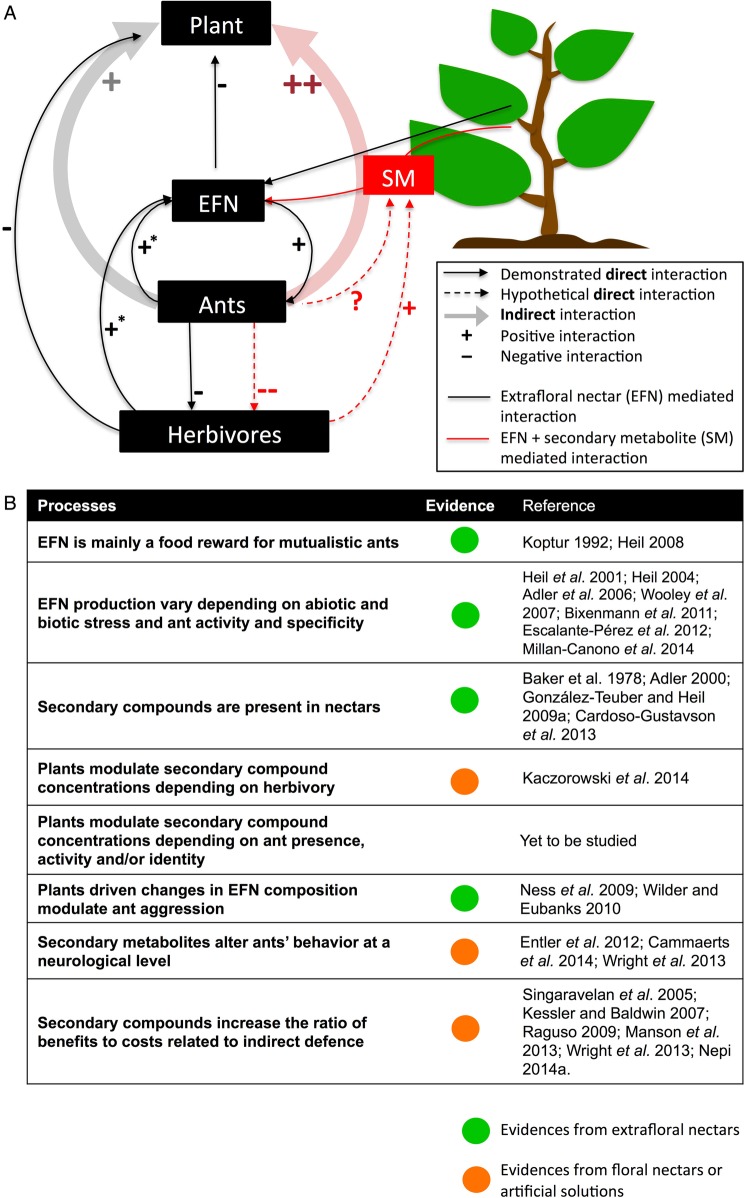Figure 4.
Representations of demonstrated and hypothetical plant–ant interactions. (A) Conceptual diagram representing ecological processes in plant–ant interactions. For clarity, the diagram is limited on the interactions that could be affected by secondary metabolites, and many other interactions (e.g. interactions mediated by volatile compounds) have been omitted. The negative interaction between EFN production and plant refers to the fact that, despite being considered a cost-efficient defence strategy in the presence of herbivores, EFN production is costly for plants (Bixenmann et al. 2011). (B) Critical processes involved in plant-driven ant manipulation and key knowledge gaps that require investigation in plants bearing extrafloral nectaries. SM, secondary metabolites; EFN, extrafloral nectar; * for temperate plants where the activity of EF nectaries is inducible; ?, due to the lack of studies it is not possible to bring forward an hypothesis on whether the interaction is positive or negative.

